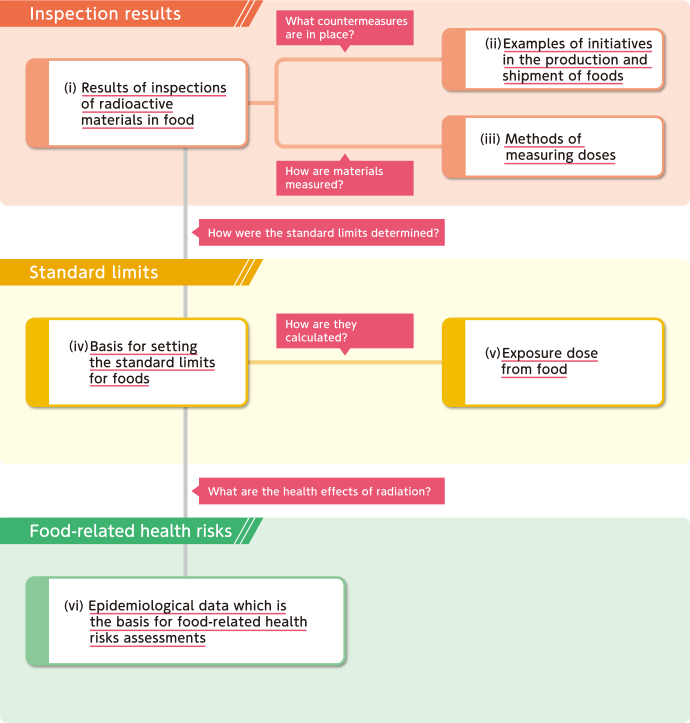To promote a correct understanding of the effects of radioactive substances on food and to deepen understanding of food safety, here we explain the standard limits for radioactive materials in food, the results of inspections, effects on health, and efforts to reduce the concentration of radioactive materials in food.
Food Relationship Diagram
Click on red, underlined sections in the relationship diagram to access the pages for each section.
View full document in PDF formatInspection results
For foods that are often eaten in daily life, inspection results are available which show the progression of radioactive material content from after the accident to the present, divided into different categories. This section will also introduce the instruments used for measuring the concentration of radioactive materials.
- (i)Results of inspections of radioactive materials in food
- (ii)Examples of initiatives in the production and shipment of foods
- (iii)Methods of measuring doses
Standard limits
In order to ensure safety and consumer peace of mind for food, a standard limit for radioactive materials in foods is established. This section will explain the approach for the establishment of the standard limits selected and also present a calculation example for exposure doses from foods from the perspective of related health risk.
View this section in PDF formatFood-related health risks
The Food-Related Health Risk Assessment (risk assessment) has been conducted regarding the radioactive materials in foods, and the results of these assessments are collected. Information about the risks of cancer related to radiation exposure and international radiation exposure assessments is also available.
View this section in PDF format


